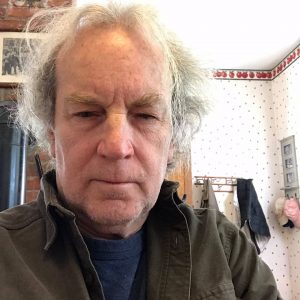Open one, shut one. That’s the land use equation Wal-Mart has used for years across America, wasting thousands of acres of land to expand its operations by building bigger superstores ands closing down ‘old’ buildings across the street or down the road. Such leapfrog development has made Wal-Mart one of the most unsustainable real estate companies operating today.
On June 10th, the Seekonk Patch website reported that Wal-Mart representatives had approached this border community in Massachusetts to tear down an existing children’s play center, known as Fantasyland, along with a golf course on 7 acres of land just off Route 6 to build their own fantasy of a huge 156,000 s.f. superstore. That’s almost the size of 3 football fields just for the building.
Three days later, the proposal came before the town’s Conservation Commission, because the project will have an effect on wetlands and a vernal pool located at the site.
One of the significant problems with the proposed site is that it abuts residential property, and the dumpster for the location is only 40 feet from residential property. An intense commercial land use next to residential homes is an incompatible clash between zoning uses — and will lead to lost values for nearby homeowners.
To make matter worse, there is already an existing Wal-Mart in Seekonk, which is large enough to do an ‘in-box conversion’ into a superstore without further town approvals. Wal-Mart has already announced that its existing store in Seekonk will be emptied and sold. The building has not yet been listed on Wal-Mart Realty.
To move the project forward, Wal-Mart wants to build within the 100 foot buffer zone of the vernal pool on the site. The corporation must get a variance from the town’s Conservation Commission to encroach on the buffer zone before going to the Planning or Zoning Boards for site plan approval or any special permit. According to the Seekonk Patch, the vernal pool contains fairy shrimp, but the developer’s representatives from Bohler Engineering have stated that species in the vernal pool would not be harmed by the project.
But the Conservation Commission was not pleased with the idea of allowing building within the 100 foot buffer zone. Allowing such construction in the vernal pool buffer zone would be a precedent for the Commission.
The Wal-Mart engineers were asked the obvious question: why not reduce the size of the store and take the project out of the buffer zone. Bohler’s representative said that a smaller store “wouldn’t be ideal,” according to the Patch. This prompted one member of the Planning Board to comment: “It wouldn’t be good for Wal-Mart. That’s the answer.”
The Conservation Commission did not agree to construction in the buffer zone, but asked Wal-Mart to consider ways to mitigate the impact and return to continue the review at a July 11the meeting.
Seekonk residents who contacted Sprawl-Busters noted that there were well over 100 residents who were upset by Wal-Mart’s hop-scotch development. Neighbors complained that the huge building was far too close to homeowners, and did not even have a sound wall or other mechanism to buffer the building from nearby homes.
In addition to the rules of the state’s Wetlands Protection Act, the town of Seekonk also has its own Wetlands Protection Bylaw. Under that Bylaw, the Conservation Commission can require a developer to maintain a strip of “continuous, undisturbed vegetative cover within the 200-foot [or 100-foot] area, unless the applicant convinces the Commission that the area or part of it maybe disturbed without harm to the values protected by the bylaw.”
The developer also has to show that it has “no practicable alternative to the proposed property use, overall project purpose… logistics, existing technology, costs of the alternatives, and overall project costs.” Wal-Mart has produced not such evidence.
The Conservation Commission can also prevent wetland loss by requiring the developer to “avoid wetlands alteration wherever feasible…minimize wetlands alteration; and, where alteration is unavoidable, shall require full mitigation.”
Readers are urged to email David Parker, Chair of the Seekonk Board of Selectman, at [email protected] with the following message:
“Dear Chairman Parker,
I hope the Selectmen will testify at the upcoming Conservation Commission hearing that Wal-Mart should not be allowed to encroach into the 100 foot buffer zone of the vernal pool on the Fantasyland parcel. This project is much too close to residential homes, and is incompatible with residential uses. It should never get beyond the fantasy stage.
It is also frivolous to allow Wal-Mart to shut down their existing building half a mile away, just so a larger building can replace it. What is the town going to do with a dead Wal-Mart on its hands — and at whose expense will that building be demolished if no other buyer comes along?
Instead of this wasteful proposal, Wal-Mart should be told to stay out of vernal pool buffer zones, and instead convert their existing store into a supercenter, rather than creating another ‘ghost box’ in Seekonk.
It is important for the Selectmen to protect homeowners, and prevent wasteful development, which will not create any net new jobs or property taxes. Wal-Mart should learn to live with what it’s got, rather than playing leapfrog development in Seekonk.”
Open one, shut one. That’s the land use equation Wal-Mart has used for years across America, wasting thousands of acres of land to expand its operations by building bigger superstores and closing down ‘old’ buildings across the street or down the road. Such leapfrog development has made Wal-Mart one of the most unsustainable real estate companies operating today.

